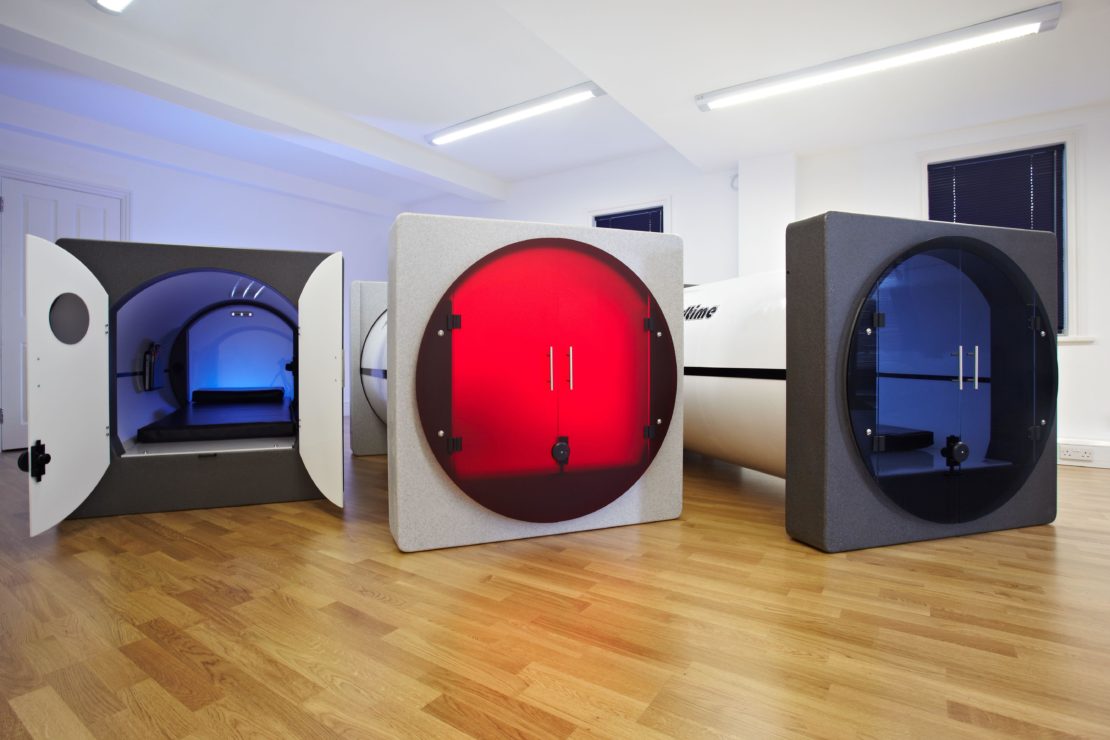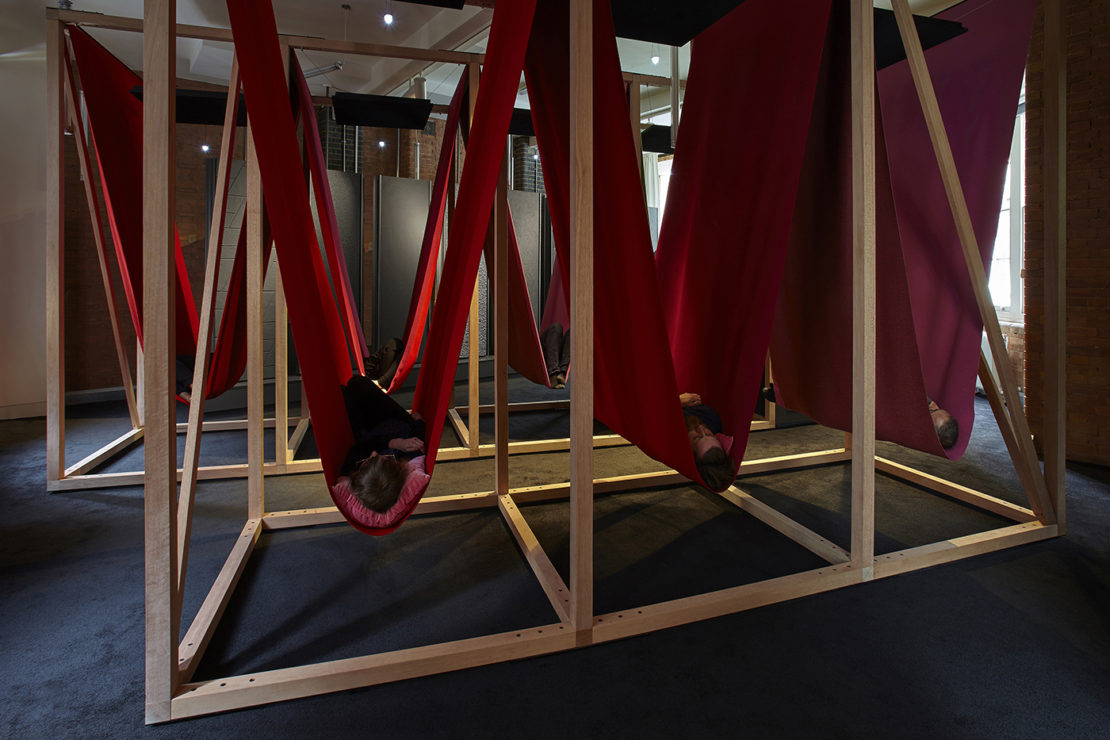Could micronaps be the ultimate productivity tool for our sleep-deprived age?
When Salvador Dalí started a new painting, he didn't reach for his brush. Instead, his first act was to grasp a heavy key. His second was to fall asleep. But at the precise moment that slumber overtook him, the key would slip from his grip. The clatter as the key struck a plate he'd earlier placed on the floor yanked him back into full consciousness.
Dalí described this ritual in his 1948 book, 50 Secrets of Magic Craftsmanship. He called it "sleeping without sleep" and, feeble pun intended, insisted that the practice unlocked his creativity.
Today, sleep is increasingly squeezed. It may have become trite to point it out, but it's true. With each generation we're getting less sleep. Ever-connected devices present a deluge of options to entertain, inform, communicate and distract. The light our screens emit is rich in the blue wavelengths known to make us more alert. So the sleep we get is of worse quality, too.
And after we're jolted awake each morning, often by the same devices that kept us up late the night before, few can catch up by day. In and out of work, the rallying call for 'productivity' keeps us in a state of perpetual busyness.
Snoozing is for cats, toddlers and layabouts. To be caught napping is to be exposed and unprepared.
But might Dalí have been on to something? He promised that the "fugitive moment when you had barely lost consciousness… is totally sufficient… for your whole physical and psychic being to be revivified." Could micronaps be the ultimate time-efficient productivity tool for our sleep-deprived age?
The science
"It seems pretty implausible to me," says Professor Russell Foster, a neuroscientist at the University of Oxford and one of the leading authorities on sleep. According to him, sleep's good work takes time. The idea that micronaps are transformative "flies in face of everything we know about sleep."
Psychologists at Flinders University in Australia looked at the phenomenon directly. It was a small study, but their findings were clear. Sleeping for just 30 or 90 seconds had little effect on the mildly sleep-deprived group of students they tested.
But 10 minutes of sleep was enough to invigorate the students and restore mental agility. Many other studies back this up: 10-20 minutes of daytime sleep can clear the mental fog of tiredness and get your day back on track.
Dalí was wrong in the detail; unlike restarting a glitchy computer, this 'rebooting' is not the work of seconds. But he was partly right: sleep isn't just a cure for sleepiness. It revives the creative juices, too.
Strategic napping
Far from shutting down, the brain is intensely busy during sleep. As conscious awareness dims, waves and spikes of neuronal activity start their distinctive dance across the sleeping brain. This choreography is vital for processing the barrage of fresh experience that we face each day.
Memories are sifted, organised and embedded. Sleep reactivates empathy, that cornerstone of civilisation, which scientists have shown evaporates when we're over-tired. Sometimes we even wake to find fresh solutions to our most vexing problems.
What is more, we don't have to wait until bedtime to reap these benefits.
Explore
Singapore: a city trying to get some sleep Finding your way out of boredom Can neuroscience help pupils to learn?Neuroscientist Foster explains that most of the really productive mental work – the information and emotion processing – occurs during the deeper phases of sleep, which only kick in after 30 minutes or so. Snooze for over an hour and you'll enter REM (rapid eye movement) sleep. In REM sleep we dream and our brains are ablaze with neural activity.
Sara Mednick and colleagues at the University of California, San Diego, showed that if, and only if, a nap includes REM sleep, it can reliably boost creativity. Their results mesh with the folk wisdom of "sleeping on" a problem, albeit for as little as 60-90 minutes.
So, faced with an exam, a taxing assignment or performance, a strategically deployed nap could raise your game. But to harvest many of the cognitive boons, you've got to sleep longer and deeper than the typical 'power nap'. And this can be problematic.
Here's the snag: if you wake from the depths of slumber your brain will be relatively deprived of blood and, as a result, sluggish and grumpy. This effect, called sleep inertia, won't reverse the nap's benefits, but it can mask them for up to three hours. So if you're unlucky, a nap of more than half an hour could leave you staggering groggily through the dregs of the afternoon yet wide awake by night.
Sleeping on the job
Still, the side-effects don't trouble everyone and the payback can be large. It is therefore not surprising that some organisations are starting to encourage at-work napping. Real Madrid encourage all their footballers to take a daily nap. Several multinational corporations including Nike, Google and Procter and Gamble also seem to have clocked the latest sleep research.

But helping employees to sleep on the job is no mean challenge. We're at our most vulnerable when asleep. Snoring, drooling and sleep-talking are as embarrassing for the sleeper as they are off-putting to their colleagues.
An Ostrich Pillow (above) could work for some. It's a bulbous, head-encasing cushion that shuts out stimulation and supports your at-desk slump.
London company Podtime (below) offer a more high-tech fix. They produce sleep pods: space-age cylinders that cocoon nappers within a clean, private space. Their clients already include Nestlé, GlaxoSmithKline and Facebook.

Inevitably, some will see the invitation to sleep at work as a sinister development. Our communications devices and employers' demands are already eroding the fragile membrane that separates our working and home lives. Sleep is one of the few remaining bastions of genuine privacy.
Designer/architect Francesco Draisci thinks he might have created a viable solution. "Without any disrespect," he says, "some of the [commercial] sleep pods can be a bit like lying in a coffin."

His Sleeperie (above) is designed for genuine withdrawal and relaxation. Snug, hammock-like modules enclose nappers in thick, noise-deadening felt. On the opening day of the London Festival of Architecture this year, Draisci's installation was mobbed by over 200 would-be snoozers. There is, it appears, an appetite for safe, calm, semi-public spaces for daytime downtime.
According to Draisci, many who emerged from the Sleeperie didn't actually sleep, but still "came back to reality thinking differently".
Just do less
If you find you can't actually nod off during the day, or are befuddled by post-nap sleep inertia, there's still a lesson in Dalí's key-wielding theatricals. In relaxing enough to approach sleep, he entered a liminal zone of free-association and imagination. He was fully off-task. Just like REM sleep, recent science shows that awake mind-wandering can be a creative headspace.
So if we value good ideas over the mindless pursuit of productivity, perhaps it's not about scheduling the perfect nap? Whether snoozing, strolling or staring out of the window, we know most creative ideas emerge when we drop the busyness and striving. If employers want to use these insights, we need a brave reorganisation of working culture. We need space to zone out, switch off, doze and daydream.
At a recent science festival, eminent neuroscience professor Vincent Walsh, himself a daily napper, put it most simply: "If we want people to be more creative, we need people to be able to do less."